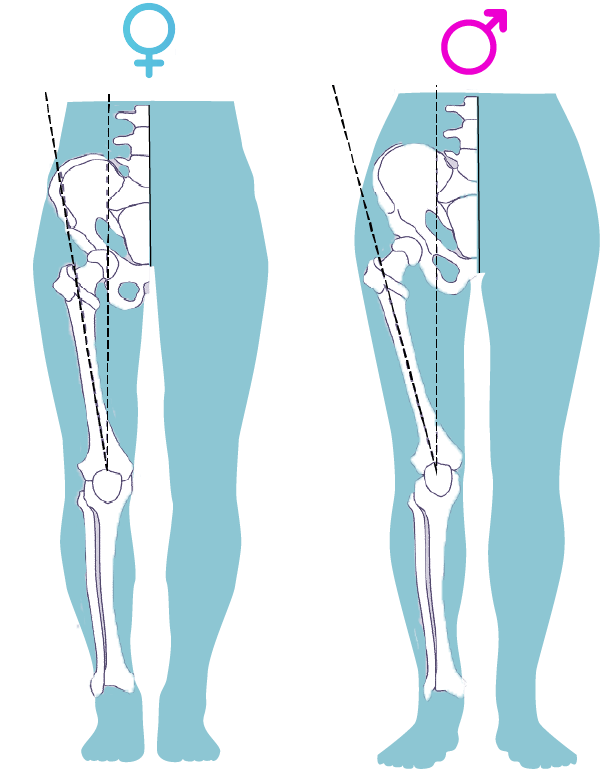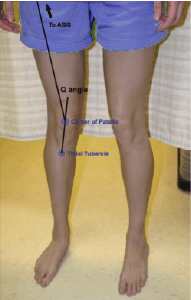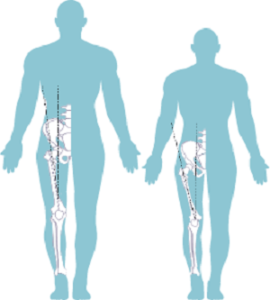
Deciphering the Q Angle
Q angle is crucial for assessing medial patellar tracking. But does it really differ between genders?

Debunking the Myth
It’s a popular belief that women have a larger Q angle because of a wider pelvis, therefore a more lateral ASIS.
Contrary to these opinions, a 2005 study did not find any significant difference in Q angles between men and women of the same height.
How is this so?
The line between ASIS and tibial tuberosity is very long. Hence, a large change in pelvic position is needed to alter the angle.
A wider pelvis by 4cm would change Q angle by only 2 degrees!
A wider pelvis by 8.6 cm would increase the Q angle by 5 degrees!

A more logical explanation for Q angle gender differences
Studies claim that height has an inverse correlation with Q angle.
Taller people have smaller Q angles as compared to short people. Since an average woman is shorter than an average man, this could explain the differences in angle.
If, according to normative data, men have a Q angle lesser than up to 5 degrees, the difference between pelvic width would have to be a whopping 8-9 cm, which is not the amount of difference we see.

Summary
Gender disparities in Q angles may be a myth! It may be height, not pelvic width, that might influence these angles.
ABOUT THE AUTHOR

GAYATRI SURESH (PT)
Gayatri Suresh (PT) is a Biomechanist who has completed her B.P.Th from DES College of Physiotherapy and M.P.T (Biomechanics) from SRM College of Physiotherapy, SRMIST. Her field of clinical expertise is in movement assessments through video analysis. Apart from her work at Auptimo, she works as a Clinical Specialist at Rehabilitation Research and Device Development, IIT Madras. She has been conferred with gold medals for her Research presentations and for securing First rank with distinction in her MPT degree respectively
REFERENCES:
The information found within this site is for general information only and should not be treated as a substitute for professional advice from a licensed Physiotherapist. Any application of exercises and diagnostic tests suggested is at the reader’s sole discretion and risk.